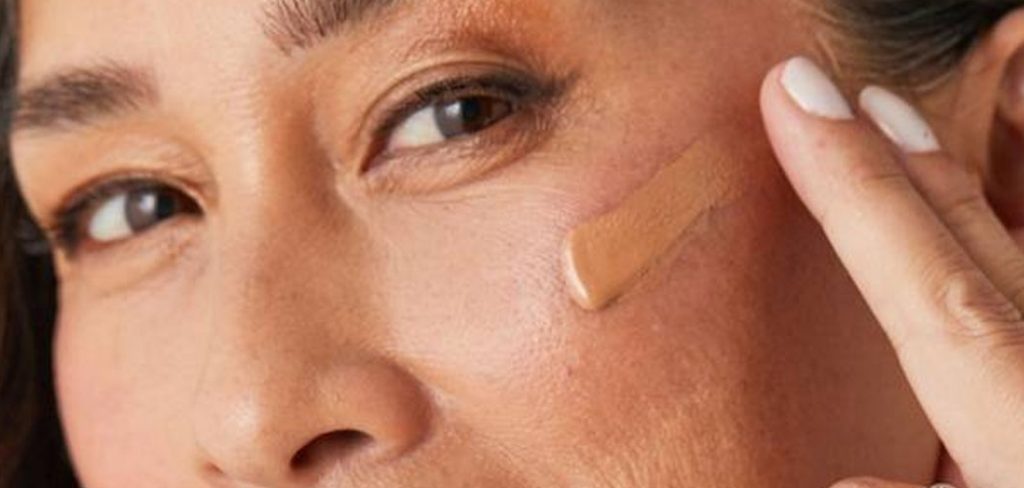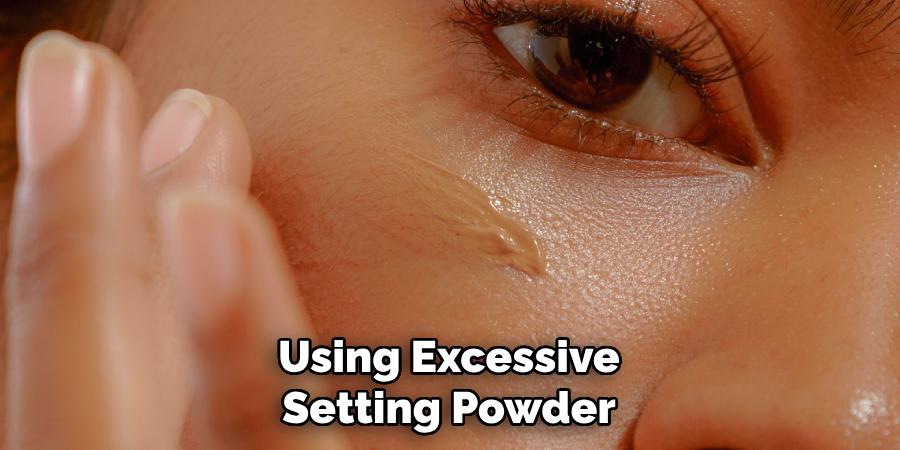Are you someone who struggles with finding the perfect way to apply foundation on dry skin? You’re not alone. Dry skin can be a tricky canvas to work with, especially when it comes to makeup application. But fear not, we have some tips and tricks that will help you achieve a flawless base for your makeup.

How to apply foundation on dry skin can be a challenging task, as dryness often highlights patches, flakes, and uneven texture. However, with the right preparation and techniques, you can achieve a flawless and natural-looking finish. The key lies in ensuring your skin is well-hydrated, using the proper tools, and selecting a foundation formula that works in harmony with your skin type.
By following a few simple steps on a powder foundation routine, you can create a smooth, radiant base that enhances your overall makeup look.
What Are the Benefits of Using a Foundation for Dry Skin?
Using a foundation for dry skin can offer numerous benefits, including:
- Hydration: The right foundation formula can provide much-needed hydration to your dry skin, keeping it moisturized and preventing the appearance of flakes and patches.
- Even Texture: Foundation can help even out your skin’s texture by filling in any imperfections or fine lines caused by dryness.
- Smooth Canvas: A well-prepared and hydrated base allows for a smooth application of other makeup products such as concealer, blush, and highlighter.
- Protection: Some foundations contain SPF or other ingredients that protect your skin from external factors that may worsen dryness, such as UV rays or pollution.
What Will You Need?
If you want to achieve a flawless and hydrated complexion with the help of foundation, here are some things you might need:
- A Clean and Moisturized Face: Before applying any makeup, it’s important to make sure your skin is clean and hydrated. This will create a smooth canvas for your foundation to adhere to.
- Foundation Suitable for Dry Skin: Look for foundations that have hydrating or moisturizing properties, such as those labeled “dewy” or “hydrating”. Avoid matte formulas, which can emphasize dry patches.
- Makeup Tools: Depending on the type of foundation you choose (liquid, cream, powder), you may need makeup brushes, beauty sponges, or your fingers to apply it. Experiment with different tools to find what works best for you.
- Application Techniques: To achieve a natural and flawless finish, start by applying a small amount of foundation on the center of your face and blend outwards using circular motions. Use a light hand and build up coverage as needed.
- Setting Powder: If you have dry skin, it’s important to use a setting powder sparingly as it can make your skin look even drier. Opt for a finely-milled powder and lightly dust it only in areas where you tend to get oily throughout the day.
10 Easy Steps on How to Apply Foundation on Dry Skin

1. Prep with a Hydrating Primer
After moisturizing, use a hydrating primer to create a smooth canvas for your foundation. A good primer not only helps to lock in moisture but also ensures that your foundation adheres properly while reducing the appearance of dry patches. Focus on areas that tend to be the driest, such as around the nose or the cheeks.
2. Choose the Right Foundation
Select a foundation that is specifically formulated for dry skin, such as a liquid or cream-based foundation. These formulas tend to be more hydrating and provide a dewy finish, which helps to give the skin a healthy glow. Avoid powder foundations as they can highlight dryness and make your skin appear flaky.
3. Apply Foundation with a Damp Sponge
To avoid emphasizing dry areas, apply your foundation with a damp makeup sponge. Gently press and blend the foundation into your skin using bouncing motions. This technique helps to seamlessly blend the product without disturbing your skin’s natural texture or emphasizing dry patches.
4. Use a Hydrating Setting Spray
A hydrating setting spray is an essential step to lock in your makeup while keeping your skin moisturized. Look for a formula that contains ingredients like glycerin, hyaluronic acid, or aloe vera to provide an extra boost of hydration throughout the day. After completing your makeup, hold the spray about 6-8 inches away from your face and mist evenly in an ‘X’ and ‘T’ motion.
Not only does this help to set your makeup, but it also gives your skin a fresh, dewy finish. Using a setting spray regularly can prevent makeup from cracking or settling into fine lines, particularly on dry skin. For best results, keep a travel-sized bottle with you to refresh your face as needed during the day.
5. Allow to Dry Naturally

After applying the setting spray, allow your face to air-dry naturally without touching it. This ensures the product sets evenly across your skin. Avoid fanning your face or using tissues, as this might disturb your makeup. Once dry, your makeup will have a long-lasting and flawless finish, ready to withstand the day’s activities.
6. Touch Up as Needed
Throughout the day, you may notice slight wear on your makeup due to factors like heat or humidity. If this happens, lightly touch up your makeup in the affected areas and reapply a small amount of setting spray. This will help refresh your look and maintain its longevity, keeping your makeup flawless and fresh from morning to night.
7. Remove Your Makeup Properly
At the end of the day, it’s essential to remove your makeup thoroughly to keep your skin healthy and prevent clogged pores. Use a gentle makeup remover or cleansing balm to dissolve all makeup, including waterproof products. Follow up with a facial cleanser to ensure your skin is completely clean, and finish with a moisturizer to rehydrate and protect your skin overnight. Proper removal is key to maintaining a clear and glowing complexion.
8. Stay Hydrated
Keeping your skin hydrated starts from within, and drinking enough water throughout the day is essential. Aim to drink at least 8 glasses of water daily to maintain proper hydration levels, as this helps flush out toxins and keeps your skin looking plump and radiant. You can also incorporate hydrating foods like cucumber, watermelon, and oranges into your diet for an extra boost. Remember, hydration is a vital component of healthy, glowing skin.
9. Protect Your Skin from the Sun

Sun protection is a crucial step in maintaining healthy skin and preventing premature aging. Always apply a broad-spectrum sunscreen with at least SPF 30 before stepping outdoors, even on cloudy days. Reapply every two hours, especially if you are sweating or swimming. Wearing protective clothing, sunglasses, and a wide-brimmed hat can also shield your skin from harmful UV rays.
10. Get Enough Sleep
Quality sleep plays a significant role in skin regeneration and overall health. During sleep, your body repairs damaged cells and produces new ones, which contributes to a radiant complexion. Aim for 7-9 hours of uninterrupted sleep each night to allow your skin ample time to recover and rejuvenate. Establishing a consistent bedtime routine and creating a relaxing sleep environment can help improve the quality of your rest, ultimately benefiting your skin.
By following a proper skincare routine and getting enough sleep, you can achieve healthy, glowing skin.
5 Things You Should Avoid
1. Skipping Moisturizer
Applying foundation on dry skin without first moisturizing can lead to a flaky and uneven finish. Always ensure your skin is well-hydrated with a nourishing moisturizer before applying any makeup.
2. Using Matte Foundations
Matte foundations tend to emphasize dry patches and can make the skin appear dull. Opt for a dewy or hydrating foundation that provides a luminous finish for a more natural look.
3. Applying Foundation on Unprepared Skin
Failing to prep your skin with a primer can cause the foundation to settle into fine lines and dry areas. Use a hydrating primer to create a smooth base and ensure longer-lasting makeup.

4. Overapplying Powder
Using excessive setting powder can further dry out your skin and accentuate dryness. Apply powder sparingly, focusing only on areas prone to excess shine, such as the T-zone.
5. Neglecting Exfoliation
Skipping regular exfoliation can cause dead skin cells to build up, resulting in patchy foundation application. Gently exfoliate your skin weekly to maintain a smooth surface for a flawless foundation finish.
By avoiding these common mistakes and following proper techniques, you can achieve a flawless and long-lasting makeup application.
Conclusion
How to apply foundation on dry skin requires a thoughtful approach to ensure a smooth and radiant finish.
Start by adequately hydrating your skin with a quality moisturizer and consider using a hydrating primer to create a seamless base. Opt for foundations specifically designed for dry skin, such as those with hydrating or dewy formulas, and apply them with a damp makeup sponge for even coverage. Avoid over-powdering and instead, set your foundation lightly with a setting spray to maintain a natural and luminous look.
By incorporating these steps, you can achieve a flawless foundation application that enhances your natural beauty while preventing dry or patchy results.
About the Author
Jane Hubbard is a passionate beauty expert with a wealth of experience in makeup, hair, and overall beauty techniques. After years of working as a hairdresser specialist, she followed her entrepreneurial spirit and started her own consultancy business.
Jane has always been driven by her desire to help others feel confident in their own skin, and she does this by sharing her knowledge, experiences, and practical beauty tips. Through her consultancy, she empowers individuals to embrace their unique beauty, offering tailored guidance that boosts both self-esteem and personal style.
Professional Focus
- Specializes in makeup, hairstyling, and beauty consulting.
- Provides personalized beauty advice, tips, and techniques to help individuals feel confident in their appearance.
- Dedicated to staying up-to-date with the latest industry trends and developments.
- Passionate about creating a comfortable and empowering experience for every client.
Education History
- University of Craft and Design – Bachelor of Fine Arts (BFA) in Woodworking and Furniture Design
- Woodworking Apprenticeships – Extensive hands-on training with skilled craftsmen to refine carpentry and furniture making techniques
- Online Courses & Masterclasses – Continued education in advanced woodworking techniques, design principles, and specialized tools
Expertise:
- Makeup artistry, hairstyling, and beauty consulting.
- Personalized beauty techniques to enhance confidence and self-expression.
- Educating clients on how to maintain their beauty routines at home.
